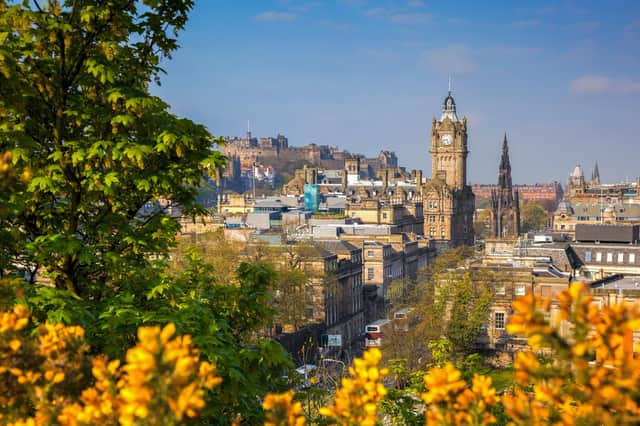Edinburgh joins league of high-cost world cities - David Alexander


Concern because not only is Edinburgh part of the survey for the first time but also because it is the most expensive of the new entrants, coming in joint 27th and on par with cities with a high cost of living such as Auckland and Minneapolis.
Yet, while no city likes to be labelled “expensive”, there must also be some sense of pride to be taken from the fact that Edinburgh is considered worthy of inclusion in a list which includes not only the great world capitals but powerhouse metropolitan areas such as Los Angeles, Hamburg and Toronto. As the saying goes, if there’s one thing worse than being talked about – it’s not being talked about.
Advertisement
Hide AdAdvertisement
Hide AdCards on the table. I have not read the full report, just the summary but it seems almost certain property prices will have played some part in giving our capital city a relatively-high position in the league table.
The irony is that, geographically, the central belt of Scotland – of which Edinburgh dominates the eastern part – is amazingly compact. This means it’s within the remit of tens and thousands of people to work in Edinburgh or enjoy its shopping and cultural facilities while living in relatively-inexpensive but easily-commutable locations outside the city.
Edinburgh, however, does have a draw which other cities in Scotland do not – not even Glasgow, despite my own background being more associated with that city and its people.
For a start a substantial number of the commercial, financial and legal top brass among the native population are content to make the city their home for life, meaning Edinburgh does not suffer the brain drain often experienced by cities in the UK outside London.
A cosmopolitan atmosphere attracts incomers, especially new talent from south of the Border who move to Edinburgh not just for work but as a location of choice in which to raise their families.
This is so different from the Edinburgh where I first set up in business almost 40 years ago. Back then it was a smaller, less costly but less important city.
What are now Edinburgh Park and The Exchange business districts were redundant farmland and a former railway goods yard. Because of green belt restrictions the supply of new-build, family-type homes was even more limited than today and contemporary flatted developments close to the city centre were almost non-existent.
Since then we’ve seen substantial development – imaginative schemes of flats in the inner city and family homes on the “south-east wedge” and on the western perimeter between the Maybury and Barnton junctions, the latter location now undergoing further growth.
Advertisement
Hide AdAdvertisement
Hide AdAnd it looks as if, at the third attempt, a new “township” (including a considerable supply of homes) will emerge on redundant land between Ingliston Park and Ride and Gogar roundabout.
When I arrived in Edinburgh the supply of suitable homes to rent was severely restricted until the implementation of short-assured tenancies in 1988.
The result was twofold. First this greatly increased the availability for people who, for their own good reasons, wished to rent rather than buy. Secondly the wide choice of accommodation – from Georgian and Regency terraced houses in the New Town to one-bedroom flats in the shadow of the Hibs and Hearts football grounds – helped attract outsiders with new ideas and new attitudes to doing business, which benefited the wider economy of the city. Short-assured tenancies are now banned in Scotland but the private rental market is fully established as a vital part of the national housing portfolio – but especially in Edinburgh.
Of course, it follows that new demand and new money adds to the local cost of living and no one wants to see that get out of control. And, yes, even allowing for inflation, Edinburgh is more expensive than 40 years ago; but it is also a much more open, welcoming and dynamic city than it was back then. I know which of the two I prefer – even if I do occasionally complain about the price of a pint on George Street.
David Alexander is managing director of DJ Alexander
Comments
Want to join the conversation? Please or to comment on this article.